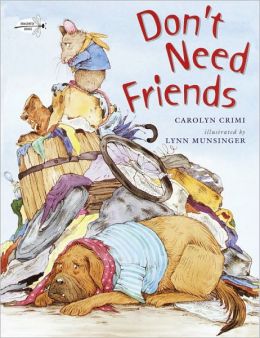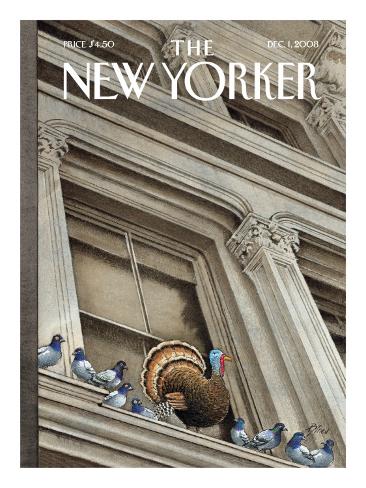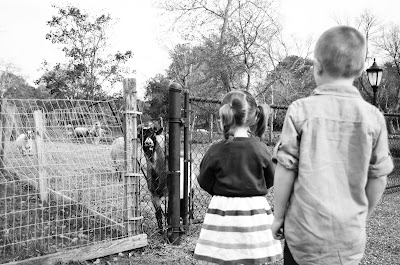Wednesday July 17, 13
Also in the fall of 2012 I attended
my first Rhode Island Festival of Children’s Books and Authors. It’s a
brilliant conference that costs $5 for students and features an all day cast of
stellar authors and illustrators who all talk about how they started their
careers as writers/illustrators. The one and only Chris Van Allsburg, who lives
in Providence started the conference years ago and is always the concluding
speaker.
If you’re looking for
authors and illustrators for children’s books, here are a few people to pay
attention to:
Alan Katz—when
he was in 3rd grade, he told his mom how he wanted to spend the rest
of his life. He held up a blank piece of paper and said, “See this, some day
I’m going to write something and people will pay me to read it!” To which his
mom responded, as she pointed to the emptiness of the paper, “See this? This is
going to be your checking account, because NOBODY does that.”
In 3rd grade Alan
wrote a delightful parody of “Jack and the Beanstalk” in which Jack trades the
cow for beans and then buys a color TV and gets time out for 3 weeks but he
doesn’t mind because the TV gets banished to his room too.
One day, one of Alan’s sons
found a ladybug on the bus, named it Oscar, and it flew away. His son made a
LOST sign that promised a reward of $200 for anyone who returned his ladybug.
When Alan asked, “What is this?! What will you do if someone says they found
your bug and want $200?!” His son said, “Then I’ll say they have the wrong
bug!”
One of his memorable lines:
“Everyone uses the same 26 letters of the alphabet. I just arrange them in
different order.” So true.
He wrote: Oops!, Take Me Out of the Bathtub, Don’t Say
That, Karate Pig, Hairy Henry, Stalling
Lynn Munsinger—famous illustrator of 90+ children’s books. She loved picture books
when she was little and she’d read the stories, then try to draw her own
pictures to tell the stories. She entered a lot of weekly drawing contests. At
age 8, she secretly entered a big contest that promised the winner an
invitation to a fancy art school. She drew a pirate and won the contest. The
recruiter of the school later knocked on her door and was discouraged to find
out that Lynn was only 8 and didn’t have any $ for tuition. Plus, her mom said
she had to concentrate on passing 3rd grade.
Lynn later went to RISD and
didn’t have a plan as graduation approached. My notes don’t record the story of
how she stumbled upon children’s bk illustration, which is kind of an important
detail, but oh well.
She explained her process
for starting a book with the style that she’s known for—anthropomorphized
animal characters:
1.
She goes to the
zoo. She observes and does quick gestural drawings to capture the movement of
animal characters. She nails the renderings of the realistic animals first,
then works on stylizing them.
2.
Then she
exaggerates the sketches and gives the characters props and accessories.
3.
She draws
different proportions and facial expressions of the animals. Sometimes her
friends pose for her and are later insulted when they find out they were
helping her draw a hippo, or whatever.
4.
She does LOTS of
rough sketches, page after page of animals moving, wearing clothing, going
about their everyday make believe lives.
5.
Then, she does a
storyboard and figures out where to place the text and what images will be paired
with the text.
6.
Next come
thumbnail sketches—tiny sketches, 2” x 2”. This is where she figures out her
book design, or the variety of page layouts. Where to have borders, where to
have the characters’ actions breaking the border, where to have close-up
illustrations and different points of view, etc.
7.
Finally, she
works on full-page layouts with pencil sketches. Then traces the lines in ink.
Then fills in with watercolor.
She’s the illustrator of the
Tacky the Penguin series, Jellybeans series, and Ponyella and 90+ more... I'm including these books below because they sound like they were probably written about me.
Harry Bliss—the
cartoonist. Each conference speaker was given a special introduction by the
conference staff. As the staff member concluded the intro, Harry walked up to
the podium with a cell phone attached to his ear. He was having a conversation
with someone in New York that apparently involved him bidding $12,000 on an
Andrew Wyath. He didn’t win the painting though.
Harry’s parents met in art
school. There was a lot of art in his house. He said, “If you couldn’t tell the
difference between a Braque and a Picasso in our house you were severely
beaten.” Ha ha.
He sends in a cover sketch
once a week to the New Yorker. Here are some of my favorites.
He has a lot of dog
cartoons. Here’s my favorite.
He also did a cartoon of
Martha Stewart in her jail cell, digging her way out, but stopping along the
way to neatly bag up the dirt and categorize it.
Once he took a photo of 3
kids sitting in a Boston MFA exhibit and they’re sitting in front of great
works of art but all they can do is sit there staring at their cell phones. In
a neat and tidy package it says, “Help me, I’m BORED” rather nicely.
Some of his books: Countdown to Kindergarten, the Bailey series, A Very Brave Witch, my all time favorites—Diary of a Worm, Diary of a Spider
Gary Schmidt—author
of Newbery Award winning Wednesday Wars.
He told stories about how nobody taught him to read in elementary school. There
were three education tracks and students were placed in classrooms of
homogenous ability levels. He was in the third track for “stupid” kids. The
first track was “corn,” the classroom that received got all the new, shiny
books. The second track was “green beans,” the class who got the hand-me-down
books. The third track was “pumpkins,” the kids who got a classroom with no
books because they weren’t considered smart enough to need them.
But in 4th grade,
one teacher singled him out on the playground and took him by the hand and
transferred him into her classroom to a desk stacked with books that he
couldn’t read. They started with Dr. Seuss. And then everything changed.
Gary eventually hated 6th
grade though. When he went to school, every day the Jewish, Catholic, and
Lutheran kids got excused for 2 hours of religious study/service work. Everyone
left the classroom except Gary. His teacher hated him and turned him into the
classroom janitor. Gary’s job for 2 hours every day was to clean all the
cubbies and change the classroom rat cages. The rats bit him so many times his
parents thought he was on drugs.
One day the principal came
into the classroom during the 2 hour period of Gary’s indentured servitude and
realized what was going on. Principal yelled at the teacher and teacher claimed
that it was pointless to try to teach Gary: “He’s by himself. It’s not like I can
teach him or anything!” So her solution to the problem of Gary was this: she
plunked the whole collected works of Shakespeare in front of him, and said,
“Read this,” while pointing to Macbeth.
Gary secretly enjoyed
Shakespeare and loved the plays he read. If the words were too hard, his rule
was: TURN THE PAGE. If a character was boring, he turned the page. If he didn’t
understand what was happening, he turned the page and skipped to parts that he
understood.
Anyway, Gary is great.
Michael Buckley—the comic writer for TV shows and other funny things. He grew up in Akron,
OH, the “most boring place in the world,” in his opinion. Akron was deadly
boring, except for a few of its notable achievements: inventing the zipper, and
conducting the annual soap box derby, in which they put small children in
plywood boxes and push them down a hill.
When he was 16, he won a joke-writing
contest for Mad Magazine. Here’s his
joke: “Why did the monkey fall out of the tree? Because it was dead.” His prize
was a day of hanging out with Eddie Murphy. But there was nothing to do in
Akron, so they went to the mall and bought Orange Julius. The end.
Later he went to the
University of OH, where they had competitive checkers! He did an internship for
Dave Letterman and met Beyonce and George Clooney. He asked kids in the
audience if they knew what an “internship” was and kindly explained it: “It’s
super exciting! In the summer time, when all your friends are at the beach,
getting a tan, you get to go to work at a company. For FREE!”
Later, he worked for the
show “Beavis and Butthead,” “Celebrity Death Match,” “MTV,” “The Fabulous Life
of Justin Timberlake…and Usher…& Whoever was Having a Fabulous Life.” And
one day he realized he hated fabulous people and that he really didn’t care the
fabulous people and their gold toilets and the people they hire to chew their
food. She he quit. Which was fabulous.
He realized he liked working
with kids and making them laugh. So he worked for Nickelodeon for a while: “Rug
Rats,” “Thornberries,” “Fairly Odd Parents,” and for a show about a sponge who
lives in a pineapple in the ocean. He ways Nickelodeon was the best job ever!
And that he should know, because he worked at Taco Bell and knows the
difference.
His book that’s my favorite:
Kel Gilligan’s Daredevil Stunt Show,
a good one for boys, adults, pretty much anyone who has had children, or has
been a child once.
Brian Floca—loved
to draw when he was a kid. He went through a weasel phase where that’s all he’d
draw. He says a lot of people draw a lot when they’re little and then they stop
for some reason. But he kept drawing.
His mom was a teacher and
took him to the library often. Books were important at his house.
Later, he studied with David
Macaulay, one of RISD’s illustration superstars.
Brian pointed out that
sometimes your books get published and then disappear promptly and are never
seen again except for in the dark corners of the Internet. But if this happens,
you have to keep going and keep writing and keep drawing. He says everyone has
ideas. But authors make the decision to do something with these ideas.
In his bookmaking process,
the three major steps are:
1.
Research
2.
Writing
3.
Drawing
Brian got the illustration
job for Avi’s Poppy. Part of his job
for Poppy was to go to the Prospect
Park Zoo in New York in the morning before the zoo opened. He says they walk
their porcupine every day and it has a little harness it wears on its walks. At
the zoo he got to observe the animals that became the models for the characters
in his pictures.
The illustrator’s job is to
enchant, he says. His pictures do exactly that.
Someone asked him what he
likes better—the process or finished product. Without hesitating, he said the
process is much more enjoyable. Looking at the final piece is horrible and he
invariably wants to change everything about the final and start over. That’s
what happens to me too.
Scott Nash—graphic
designer. He designed the logos for Nickelodeon, Comedey Central, Cartoon
Network.
His advice: if someone
offers you a contract to illustrate a dinosaur book, TAKE IT! His Dinosaur Stomp is about dinosaurs who
get together for a party that eventually causes their extinction.
Scott illustrated the entire
Flat Stanley series and to date receives LOTS of Flat Stanleys and Flat other
characters, including Flat Ralph and a Stanley posing with Clint Eastwood.
Chris Van Allsburg—needs no introduction. He’s probably the biggest illustration superstar
of them all. Nobody makes money in children’s book illustration except for him.
He’s the recipient of the largest illustration contract in the history of the
world, $400,000 for Swan Lake, which
incidentally is a big piece of crap. But I guess you can get away with things
like that when you’re Chris Van Allsburg.
CVA said, “One of the things
I thought was appealing about being an artist was that I didn’t have to be
around people.” There’s something satisfying about being alone and creating a
new world.
His first book was The Garden of Abdul Gasazi. At the time,
he was a sculptor, RISD student days were over, he hadn’t ever sat down to
write any more than a postcard. He had this idea for a picture of a boy chasing
a dog through a topiary. That’s all. But then he started asking himself
questions—who owns the garden? What does he do? Etc. It turned into a book
about the magic of illusion vs. the magic of miracles and the stage of the
magician.
He said too many books are
about content that simply tells you what happened. The boy goes fishing with
his dad, they catch a fish, they bring it home, the end. That’s the wrong story
though. It should be a story from the fish’s point of view. This is the case
with his book, Two Bad Ants. It’s the
story of two ants who get into trouble because they sneak into a human house
and eat too many sugar crystals. They try to escape the house by finding
shelter in the crevices of an English muffin which is about to go into the
toaster, and then they stick their heads in water, get blasted into the garbage
disposal, and then find the electrical sockets and get electrocuted. It sounds
like every child’s favorite book!
He’s done so many projects,
but my favorite is The Mysteries of
Harris Burdick. So good.







































